Winter 2020
Message from the FSSB Chair
By Steven Johnson, FSSB Chair
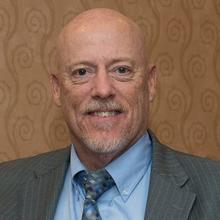
In January 2014, at the NIST Campus in Gaithersburg, Maryland, the seeds were planted to establish the Organization of Scientific Area Committees (OSAC) for Forensic Science. I was fortunate to attend that meeting although, I must admit, I was a bit of a skeptic as far as how much this proposed organization could achieve. Now, six years later, I take great pride in having been a part in this organization and am excited to see the exponential increase in standards development during that time. I never ceased to be amazed at the talented professionals who were brought together for the betterment of forensic science and its applications in the United States.
Over the course of the remaining fiscal year (through September 30, 2020), there will be significant improvements and efficiencies in OSAC structure and operations as we begin to implement OSAC 2.0. I look forward to working with the rest of the Forensic Science Standards Board (FSSB), as well as with our NIST partners, to make these changes as seamless as possible.
As the first third of our membership reached the end of their second term this past September, I continue to encourage those of you who are interested in participating in standards development efforts to apply for OSAC membership (affiliate or active). We will see a similar turnover in membership at the end of fiscal years 2020-2021. Be mindful of these dates and reach out to fellow practitioners and stakeholders to consider applying for membership in OSAC, regardless of their level of possible participation.
Over the coming months, OSAC members will have in-person meetings to continue their collaborative standards development work. These meetings are very beneficial, and the OSAC leadership will ensure that the schedule gives the various committees and task groups the maximum amount of time to focus on the mission. The FSSB will continue to meet twice a month to deliberate over standards in development, provide leadership and guidance to the membership, and support the future of the organization. Included in these future meetings, we will continue the OSAC Leadership Strategy Sessions (OLSS) sometime in September as the fiscal year ends. These sessions have proven invaluable in communicating concerns, needs and suggestions from the various Scientific Area Committee (SAC) and Subcommittee (SC) chairs and gives the FSSB a chance to impart some direction to the OSAC leaders in preparation of the next year’s goals.
Finally, I want to thank the FSSB and the membership in general for their support over the last two and a half years. I will be completing my second term at the end of fiscal year 2020 and will have to step down as IAI representative and Chair of the FSSB. I was humbled to be considered to replace Jeremy Triplett in October 2017 and can’t thank the members of the FSSB enough for their sound counsel, constructive criticism and exemplary leadership over that time. I believe I speak for the rest of the FSSB when expressing my excitement for more standards development successes over the coming year!
OSAC In Action
OSAC at AAFS
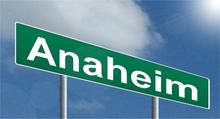
OSAC is excited to participate in the upcoming 2020 American Academy of Forensic Sciences (AAFS) Annual Scientific Meeting in Anaheim, California. Over 5,000 forensic science professionals will come together February 17-22 to share the most current information, research, and updates in the field. OSAC, along with NIST, will be one of more than 150 exhibitors there to share information and connect with our stakeholders and partners in the forensic science community.
Be sure to visit us at Booth #103 to learn more about the latest forensic science standards development activities, find out what other OSAC members will be presenting throughout the week, and pick up an “OSAC Member” or “OSAC Affiliate” ribbon to decorate your AAFS Conference Badge as we will be handing them out there.
Also, register to attend Workshop 14 – Mass Disasters and Disaster Victim Identification (DVI) on Monday, February 17 from 8:30 a.m. to 5:30 p.m. to learn more about the OSAC Registry Standard ANSI/ASB Best Practice Recommendation 010, Forensic Anthropology in Disaster Victim Identification: Best Practice Recommendations for the Medicolegal Authority, First Edition, 2018 and its impact on the forensic science community.
OSAC at ASCLD

“Together Toward Tomorrow” is the theme for the 2020 American Society of Crime Laboratory Directors (ASCLD) Symposium being held March 29 - April 2 in Denver, Colorado. OSAC is excited to be one of more than 50 exhibitors at this year’s symposium. Visit us at Booth #17 to learn more about how we can all work together to strengthen forensic science through the development and implementation of standards for a better tomorrow.
OSAC's Friction Ridge and Speaker Recognition Subcommittees Develop Process Maps
Process maps are useful tools that can help forensic science disciplines provide insight into their specific activities, identify areas for improvement, and discover where standards may be needed.
Read more about the process maps developed by OSAC’s Friction Ridge and Speaker Recognition Subcommittees and why they are important for the forensic science community. OSAC’s Firearms & Toolmarks and Biology/DNA subcommittees are also developing process maps and the Seized Drugs Subcommittee will be launching a process mapping working session this summer.
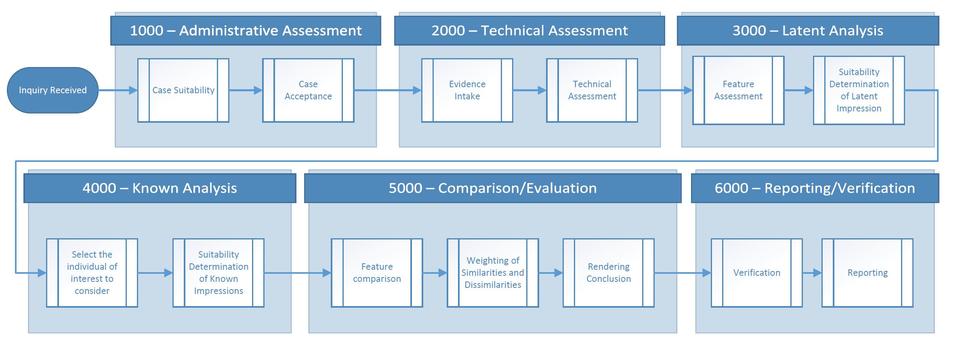
OSAC Visits Houston Forensic Science Center
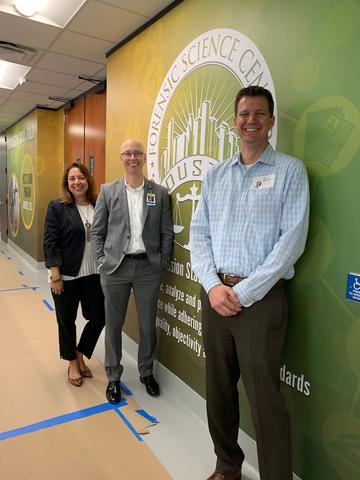
This fall, John Paul Jones II, OSAC Program Manager and Karen Reczek, NIST Ex-Officio, OSAC Forensic Science Standards Board, visited with Peter Stout, Director of the Houston Forensic Science Center (HFSC) and received a tour of HFSC’s new laboratory. An early implementer of standards on the OSAC Registry, HFSC recently completed a move to a new location with expanded space. HFSC is one of a few U.S. labs leading the way in openness and transparency regarding its quality system and regularly evaluates the performance of its examiners in certain disciplines by submitting blind quality control cases into their workflow. HFSC is committed to sharing what it is learning and recently published a paper, Implementation of a Blind Quality Control Program in a Forensic Laboratory, in the Journal of Forensic Science.
OSAC Adds Six Standards to the Registry in FY2020 Q1
In the first quarter of fiscal year 2020, the FSSB approved the addition of six standards to the OSAC Registry:
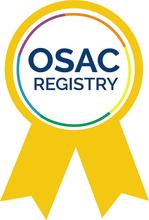
- ASB Technical Report 025, Crime Scene/Death Investigation – Dogs and Sensors – Terms and Definitions, First Edition, 2017. Made effective on the Registry October 1, 2019 and initially developed by OSAC’s Dogs & Sensors Subcommittee, this technical document provides the standardization of terms and definitions used in the detection dog community.
- ASTM E3115-17 Standard Guide for Capturing Facial Images for Use with Facial Recognition Systems. Made effective on the Registry October 1, 2019 and initially developed by OSAC’s Facial Identification Subcommittee, this guide is intended for use by practitioners who are choosing, setting up, and operating photographic equipment designed to capture facial images for use with an automated Facial Recognition System or used for manual comparisons by a trained facial examiner.
- ASTM E3148-18 Standard Guide for Postmortem Facial Image Capture. Made effective on the Registry October 1, 2019 and initially developed by OSAC’s Facial Identification Subcommittee, this document provides guidelines for capturing postmortem facial images of human remains in controlled (e.g., morgue) and semi-controlled (e.g., field) settings to facilitate automated facial recognition searches or manual facial comparisons that could contribute to forensic investigations.
- ASB 037, Guidelines for Opinions and Testimony in Forensic Toxicology, First Edition, 2019. Made effective on the Registry November 5, 2019 and initially developed by OSAC’s Toxicology Subcommittee, this document delineates guidelines for best practices in forensic toxicology opinions and testimony. Specifically, it is intended for the subdisciplines of human performance toxicology (e.g., driving-under-the-influence of alcohol or drugs and drug-facilitated crimes), postmortem forensic toxicology, non-regulated employment drug testing, court-ordered toxicology (e.g., probation and parole, drug courts, child services), and general forensic toxicology (e.g., non-lethal poisonings or intoxications).
- ASTM E2917-19a Standard Practice for Forensic Science Practitioner Training, Continuing Education, and Professional Development Programs. Made effective on the Registry November 5, 2019 and initially developed by an OSAC Interdisciplinary Virtual Subcommittee, this practice provides foundational requirements for the training, continuing education, and professional development of forensic science practitioners to include training criteria toward competency, documentation, and implementation of training, and continuous professional development.
- ISO 21043-2:2018 Forensic Sciences - Part 2: Recognition, recording, collecting, transport and storage of items. Made effective on the Registry December 3, 2019, and initially developed by an OSAC Interdisciplinary Virtual Subcommittee, this document specifies requirements for the forensic process focusing on recognition, recording, collection, transport and storage of items of potential forensic value. It includes requirements for the assessment and examination of scenes but is also applicable to activities that occur within the facility.
OSAC Adds 25th Standard to the Registry

OSAC marked the end of 2019 by adding the 25th standard to the Registry! The most recently added standard, ISO 21043-2 Forensic Sciences – Part 2:2018 Recognition, recording, collecting, transport and storage of items, explains the factors to consider when assessing and examining a crime scene. It also describes the documented information that is needed to ensure evidence is protected throughout the forensic process, both in the field and in the laboratory.
Read our news article to learn about the other 12 standards that were added to the Registry in 2019 and hear from JP Jones, OSAC Program Manager, about the benefits of using these standards. We look forward to growing the Registry in 2020 and working with crime labs and other agencies to implement these high-quality documents.
OSAC Program Office News
OSAC 2.0 Updates
By Karen Reczek, NIST Ex Officio, FSSB
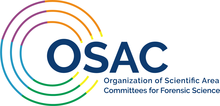
The FSSB is working with NIST and the OSAC Program Office (OPO) to plan the implementation of OSAC 2.0, which was announced in September 2019.
Recent activities include:
- Embedding Resource Committee (RC) members into OSAC subcommittees. RC representatives embedded in the subcommittees will continue to meet on an ongoing basis to discuss standards development activities as an FSSB Task Group. RC Chairs will stay on as active members of the FSSB and chair their respective FSSB Task Groups. Embedding RC members into the subcommittees ensures that diverse perspectives and legal, human factors, and quality considerations are included during the initial drafting of documents. Keeping RC task groups will allow legal, human factors, and quality representatives to continue to have a venue to discuss pressing issues informally with their peers. This change in the OSAC structure resulted in the following additional changes:
- The ASCLD Board of Directors has agreed to manage the OSAC Registry Impact Survey, previously managed in collaboration with the Quality Infrastructure Committee (QIC). This Impact Survey seeks input from the community on the “impact” that approving a standard for the OSAC Registry will have on forensic science service providers.
- The FSSB voted to establish an FSSB Terminology Task Group to support and transition the terminology efforts previously managed by the QIC.
- The FSSB voted to establish an FSSB Technical Review Panel Process Task Group. This group will draft criteria, processes, and procedures for the development and management of the 2.0 Internal Technical Review (TRP) Panels. Once defined, the FSSB will pilot the process and refine it, as appropriate, before it is finalized.
- The FSSB voted to finalize the revised SAC and Subcommittee structure for 2.0 implementation. There will be some changes in the number of SACs and Subcommittees in the new organization.
- The FSSB informed the OSAC membership that they will be working with NIST and the OPO to revise the Bylaws and Charter, the current Terms of Reference, and other organizational documents for the new 2.0 organization.
Call for Nominations for the Sharon B. Nakich Award
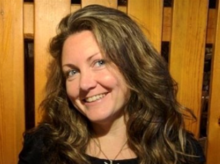
The OSAC FSSB has established the Sharon B. Nakich Award to honor the memory of our colleague, who passed away in March 2019. This annual peer-to-peer award recognizes an especially helpful attitude, kindness, teamwork or behind-the-scenes contributions to support the goals of OSAC.
Please consider nominating one of your peers.
Criteria:
This award recognizes an individual who has made significant contributions to OSAC’s mission through his/her support of OSAC. The nominee works diligently and tirelessly as a champion for OSAC, at times without recognition.
Eligibility:
- All OSAC members and affiliates.
- Any non-OSAC member who has contributed significantly to furthering the mission of OSAC.
Nomination/Approval Procedures and Requirements:
Two or more narrative statements from two or more individuals addressing the criteria listed above. Nomination justifications should include, but are not limited to, a description of:
- Specific activities the nominee was involved in that had a positive effect in supporting OSAC’s mission.
- How the individual’s action helped the organization further its goals.
- The nominee’s willingness to go the extra mile.
Nominations for the 2020 Sharon B. Nakich Award are now being accepted. Please submit your nomination and all supporting documents to Steven Johnson (steven.johnson [at] idealinnovations.com (steven[dot]johnson[at]idealinnovations[dot]com)), FSSB Awards Task Group Chair, no later than close of business on Friday, February 21, 2020.
The Sharon B. Nakich Award recipient will be announced at the spring OSAC Meetings.
Forensic Soil Evidence Collection Training Video Now Available
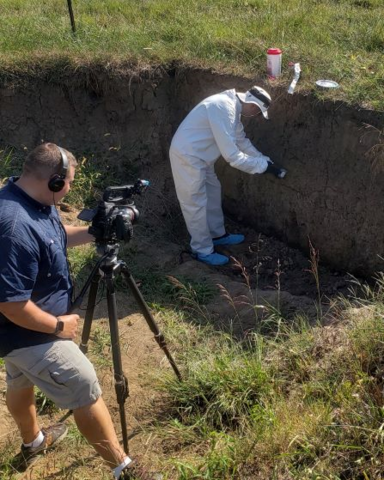
OSAC’s Geological Materials Subcommittee, the University of Kentucky, the Federal Bureau of Investigation, and the International Union of Geological Sciences (IUGS)-Initiative on Forensic Geology are “digging in” to help educate law enforcement and crime scene professionals on how to collect soils and other geological evidence.
The team has made a training video which is intended to accompany a draft collection guide developed by OSAC’s Geological Materials Subcommittee. This collection guide, Standard Practice for Collection of Soils and Other Geological Evidence for Criminal Forensic Applications, is a draft standard forwarded by OSAC to ASTM. It describes the best practices for documenting, collecting, packaging, and preserving soil and geological material evidence at crime scenes, alibi locations, and reference locations.
Read more about this collaborative effort and its importance to the forensic science community.
OSAC Registry Implementation Corner
Standard Implementation Efforts Underway
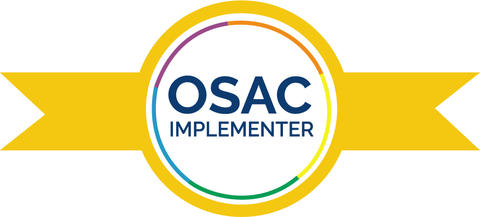
Since the OSAC Registry Implementation Plan was released in August 2018, several organizations have embarked on the implementation journey.
The Georgia Bureau of Investigation-Division of Forensic Sciences (GBI-DOFS) was the first laboratory to embrace the OSAC Registry approved standards. When GBI-DOFS made the decision in January 2017 to adopt all standards placed on the OSAC Registry, it did not have a plan on how to do it. According to Lori Nix, Assistant Deputy Director at GBI-DOFS, there were numerous concerns raised by laboratory individuals, the most frequent centered around not being aware of what documents would eventually be placed on the Registry. To combat this concern, GBI-DOFS encouraged practitioners to be part of the standards development process by becoming an OSAC member, applying to become a member of a consensus body, and most importantly, to provide their expertise during open comment periods. Now three years later, GBI-DOFS is refining and formalizing its implementation program as the volume of standards being placed on the Registry increases. Read Lori Nix’s article celebrating GBI-DOFS’s three-year implementation anniversary in the January issues of the ASCLD Crime Lab Minute.
The Houston Forensic Science Center (HFSC) is another early implementer of the OSAC Registry Approved standards. In December 2018, Dr. Peter Stout, HFSC’s CEO and president asked HFSC’s board of directors to pass a resolution to adopt the OSAC Registry Approved standards into HFSC’s quality manual. That resolution passed unanimously and HFSC was on its way. The first OSAC Registry approved standards HFSC is adopting are in the seized drugs and toxicology sections. The HFSC is part of a broader effort throughout Texas for forensic science service providers to implement standards. Read more from Dr. Stout about the benefits and challenges to implementation and the steps HFSC took to address them.
The Texas Forensic Science Commission is the first regulatory body in the United States to recommend implementation of standards on the OSAC Registry and unanimously recommended at its October 25, 2019 Commission meeting that all crime laboratories accredited to perform forensic analysis in the State of Texas voluntarily adopt standards published on the OSAC Registry. The Commission encourages the forensic community in Texas to follow the OSAC Standards Bulletin and actively participate in the standards adoption, including opportunities to comment on standards before they reach consensus and publication on the Registry. More than forty agencies in Texas and forty outside Texas are directly impacted by the Commission’s recommendation.
The New York State Police Crime Laboratory System hosted a meeting in Albany in November 2019 of the New York Crime Laboratory Advisory Committee (NYCLAC). A representative of the OSAC Program Office was invited to give a presentation and provided guidance during the Q&A session that followed. Approximately two dozen laboratories were represented during the highly interactive session. As an FSSB member, NY State Police Forensic Investigation Center (FIC) Director Ray Wickenheiser volunteered to serve as a pilot site leader to help NY crime laboratory directors begin the standards implementation process.
The OSAC Program Office continues to arrange presentations to forensic science organizations, criminal justice conferences and meetings with individual agencies to facilitate the implementation of standards on the OSAC Registry. Come visit us at our exhibitor booths at the upcoming 2020 AAFS Scientific Annual Meeting in Anaheim in February and the ASCLD Symposium in Denver in March to learn more about how your agency can start on its implementation journey.
Already started? Then complete the Laboratory Implementation Declaration Form and send it to mark.stolorow [at] nist.gov (mark[dot]stolorow[at]nist[dot]gov) to let us know. Share your implementation story and be featured in a future OSAC news post.
Implementation Survey Coming Soon

An online survey is under construction to capture the implementation of standards listed on the OSAC Registry. The survey is being developed by The American Society of Crime Laboratory Directors (ASCLD) Forensic Research Committee and Standards & Accreditation Initiatives Committee. Among its benefits, the survey aims to provide baseline information and feedback about the extent to which documents included on the OSAC Registry have been or are being implemented into crime laboratory standard operating procedures, and to identify key challenges many laboratories face with implementation initiatives. Once this baseline is established, the Standards & Accreditation Initiatives Committee will continue to evaluate the operational impact of proposed OSAC standards through Impact Surveys distributed to the ASCLD membership. These surveys provide a deeper understanding to issues surrounding implementation and will enable the ASCLD, OSAC and other stakeholders to develop solutions to lower the barriers and promote greater consistency across the forensic science community. OSAC is grateful to collaborate with the ASCLD on this endeavor.
Committee Updates
Participate in OSAC's Organic Gunshot Residue Inter-Laboratory Study
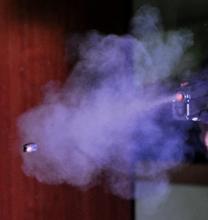
OSAC’s Organic Gunshot Residue Task Group is looking for participants to join an inter-laboratory study on the collection and analysis of organic gunshot residues. This study is intended to support a draft standard practice the task group has developed which contains methodologies for gas chromatography/mass spectrometry (GC/MS) and liquid chromatography/mass spectrometry (LC/MS) analyses of organic gunshot residues.
Visit the Gunshot Residue Subcommittee webpage to learn more about the study and how you can participate.
Standards Development Activities
Here's a snap shot of the standards development activities OSAC's committees are working on:
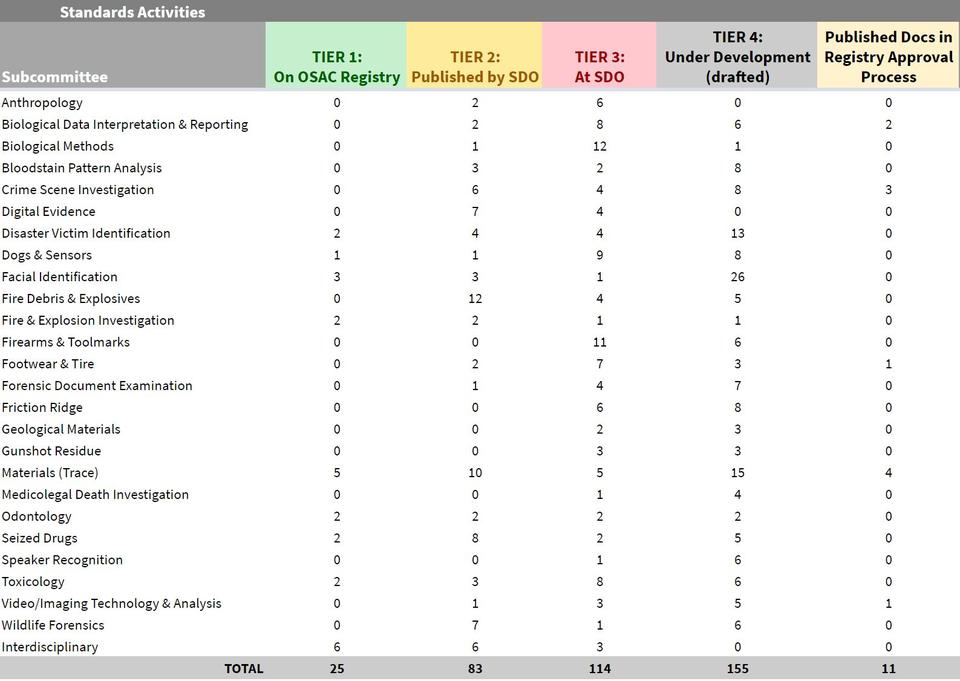
Tier 1: A document on the OSAC Registry; approved by OSAC with the highest level of vetting.
Tier 2: OSAC supported document that completed the SDO consensus process and was published by an SDO.
Tier 3: An OSAC draft document that was sent to an SDO for further development. The document was drafted with input from OSAC’s Resource Committees and approved by the SAC.
Tier 4: A working draft document inside OSAC’s development process and not yet publicly available.
For a complete list of discipline specific documents that are currently in the development process, please visit the relevant OSAC subcommittee webpage.
OSAC In the News
AFQAM website:
Houston Forensic Science Center is an Early Implementer of Standards on the OSAC Registry
A Census of Medicolegal Death Investigation in the United States: A Need to Determine the State of our Nation’s Toxicology Laboratories and Their Preparedness for the Current Overdose Epidemic:
OSAC mentioned on page 5
The Forensic Enewsletter:
OSAC Adds 25th Standard to the Registry

ISHI Blog:
OSAC Adds 25th Standard to the Registry
Forensic Laboratory Services Bureau (FLSB) Forensic Library Services (repost of OSAC's article):
OSAC’s Friction Ridge Subcommittee Develops Friction Ridge Process Map
Promising Practices in Forensic Lab Intelligence:
OSAC Lexicon referenced on page 9
ADA News:
ADA forensic dentistry standard created after 9/11 added to federal registry
November 2019 ISHI Report:
An Update from the Organization of Scientific Area Committees (OSAC) for Forensic Science
ASTM Standardization News:
OSAC mentioned in the “Crime Scene Photography” article on page 8
Rank One’s Face Recognition Blog:
Facial Recognition Code of Ethics
Evidence Technology Magazine:
Two DNA Standards Considered for Registry
Upcoming OSAC/Major Events

February
17-22: 2020 AAFS Annual Scientific Meeting in Anaheim, CA. Visit OSAC, along with NIST, at Booth #103!
March
10-13: OSAC In-person Meeting in Norman, OK. Participants include the Chemistry & Crime Scene/Death Investigation SACs and SCs (not including Odontology).
29-April 2: 2020 ASCLD Symposium in Denver, CO. Stop by and see OSAC at Booth #17!
April
21-24: OSAC In-person Meeting in Norman, OK. Participants include the Biology/DNA, Digital/Multimedia, Physics & Pattern Interpretation SACs and SCs, and Odontology SC.
Professional Organization Spotlight
By Lucy A. Davis, OSAC FSSB AAFS Representative
American Academy of Forensic Sciences
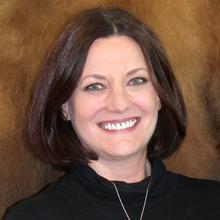
The American Academy of Forensic Sciences (AAFS) is a multidisciplinary professional organization that provides leadership to advance science and its application to the legal system. The objectives of the Academy are to promote professionalism, integrity, competency, education, foster research, improve practice, and encourage collaboration in the forensic sciences. With over 6,600 members divided into eleven sections, AAFS is unique in representing the forensic community as a whole. Included among the Academy’s members are physicians, attorneys, dentists, toxicologists, anthropologists, document examiners, digital evidence experts, psychiatrists, physicists, engineers, criminalists, educators, and others. Representing all 50 United States, Canada, and 70 other countries worldwide, they actively practice forensic science and, in many cases, teach and conduct research in the field. The AAFS represents its membership to the public and serves as the focal point for public information concerning the forensic science profession. It provides service to our community through the Journal of Forensic Sciences (an internationally recognized scientific journal), the Academy Newsfeed, its annual scientific meeting, conducting of webinars, and the initiation of actions and reactions to various issues of concern.
In 1973, AAFS became affiliated with the Forensic Science Foundation (FSF), a nonprofit organization committed to studying the application of science to the resolution of social and legal issues. The FSF has become the educational, scientific, and research arm of the AAFS. Charitable donations to FSF are used to promote public education concerning all disciplines in the forensic sciences; to develop and conduct education and training programs; to develop new ways to improve the forensic sciences; and to support research in fields relating to the forensic sciences.
The AAFS recognized the need to support the OSAC’s development of a national registry of consensus-based standards. AAFS members are active participants on all the OSAC subcommittees. In February 2016, AAFS created the Academy Standards Board (ASB), a wholly owned subsidiary organization accredited by the American National Standards Institute (ANSI) as a standards development organization (SDO). This organization works closely with OSAC and its subcommittees by developing American National Standards (ANS) based on OSAC documents. To date, ASB has published 26 ANS with five approved for the Registry and over 100 additional draft OSAC standards going through the standards development process.
AAFS is proud of our role working with OSAC and the forensic science community to advance the field of forensic science both nationally and internationally.
NIST Activities
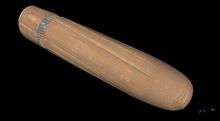
Kennedy Assassination Bullets Preserved in Digital Form. Read about how NIST scientists used advanced imaging techniques to create digital replicas of these important historical artifacts.
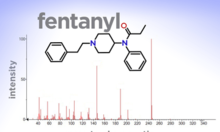
Stopping Fentanyl at the Border: Can Chemical Detectors Help? Scientists at NIST test whether a chemical detection technology called ion mobility spectrometry, or IMS, can be used to screen vehicles for fentanyl.
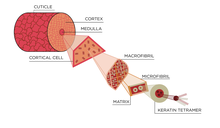
A Solution to a Hairy Problem in Forensic Science. Learn how scientists at NIST have developed a new way to dissolve hair proteins without destroying them.

